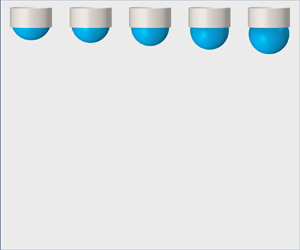No CrossRef data available.
Article contents
Modelling the first droplet emission from an electrified liquid meniscus hanging at the nozzle tip
Published online by Cambridge University Press: 23 May 2024
Abstract

Electrohydrodynamic (EHD)-induced droplet emission is an efficient method for the production of micron- and submicron-sized droplets in technological applications. Existing studies propose several scaling laws to determine the size of the emitted droplet. However, they have usually focused on the tip streaming phenomena of a droplet when subjected to a uniform electric field. In most applications, a non-uniform distribution of the electric field is created owing to the nozzle-to-plate configuration. Here, we employ an arbitrary Lagrangian–Eulerian method to demonstrate the mechanism of the first droplet emission from an electrified liquid meniscus with a fixed volume hanging at the nozzle tip. The critical condition when tip streaming occurs is determined using our numerical results. A phase diagram in terms of the electric field and initial liquid volume is presented to obtain the commonly used jetting mode. The effects of the liquid volume, electric field strength and electrical conductivity of the liquid on the processes of jet formation and breakup are further investigated. We find a particularly non-monotonic dependence of the size of the emitted droplet on the electrical conductivity. These findings could be useful for generating microdroplets and improving injection frequency in EHD printing technology.
- Type
- JFM Papers
- Information
- Copyright
- © The Author(s), 2024. Published by Cambridge University Press





